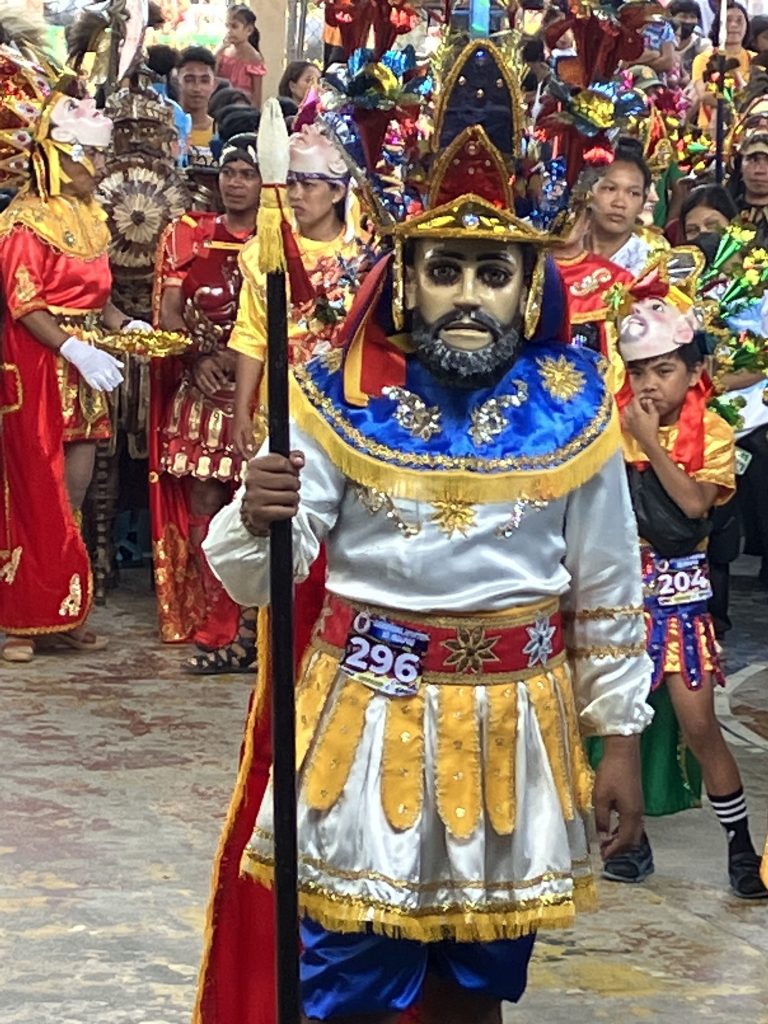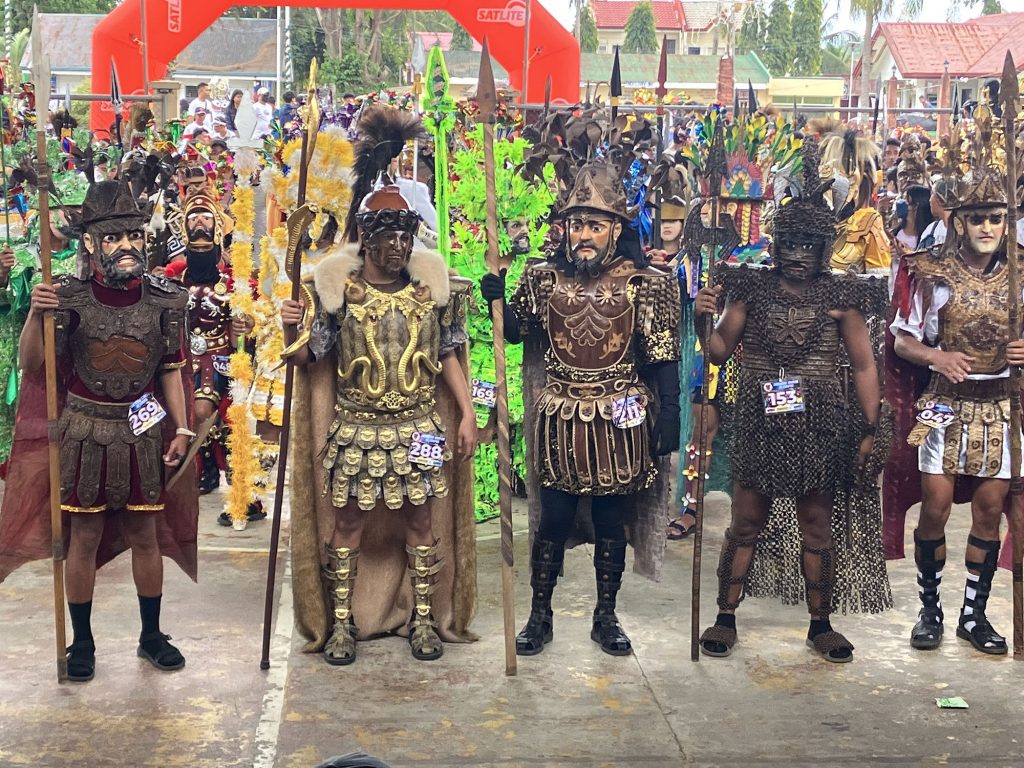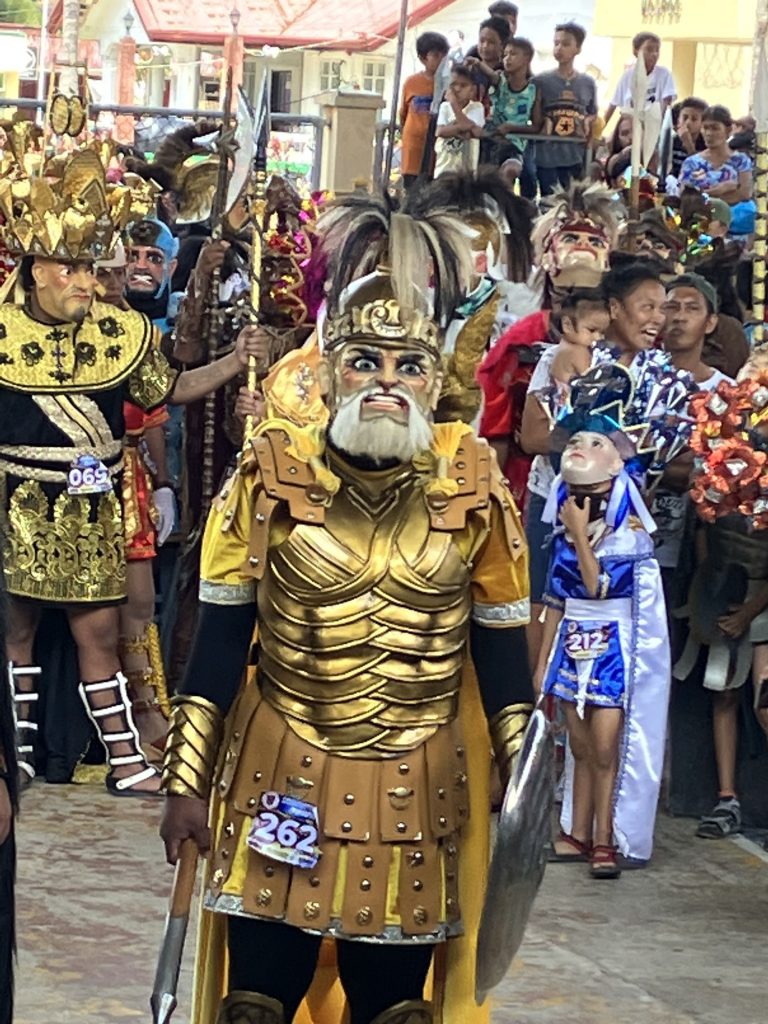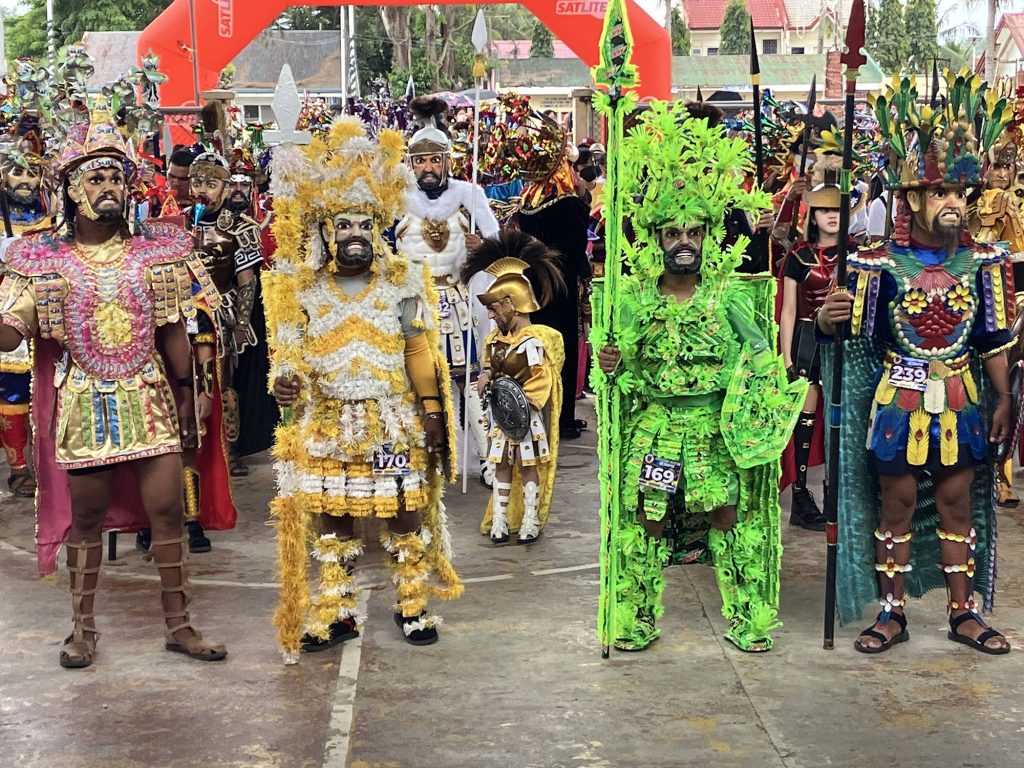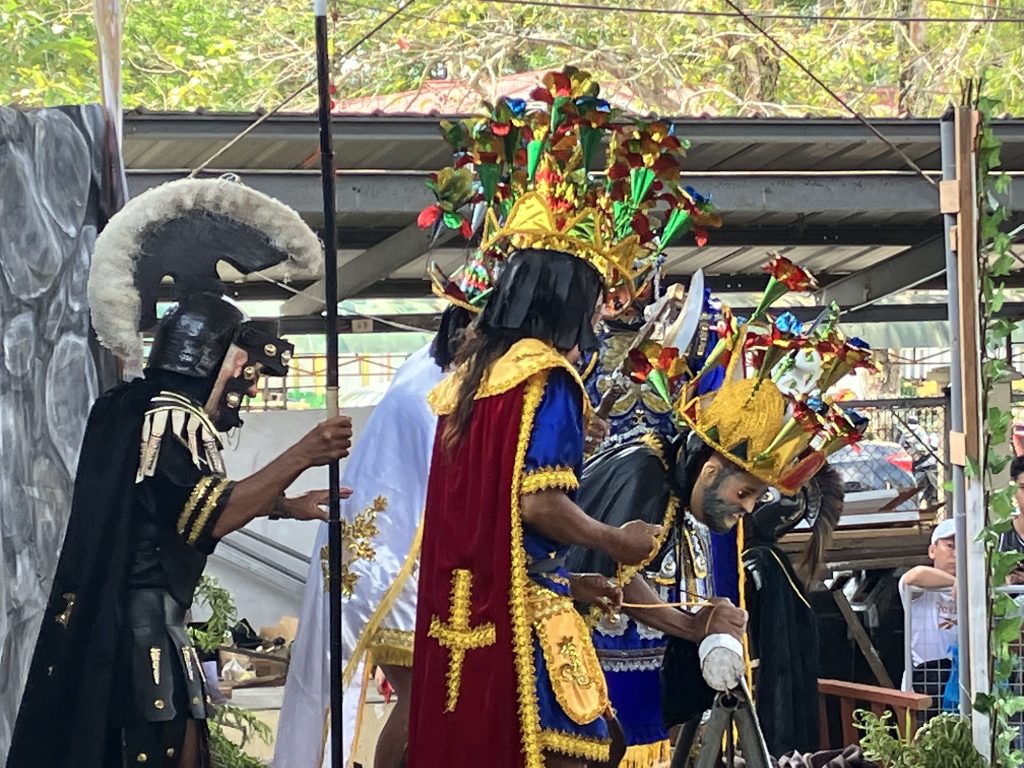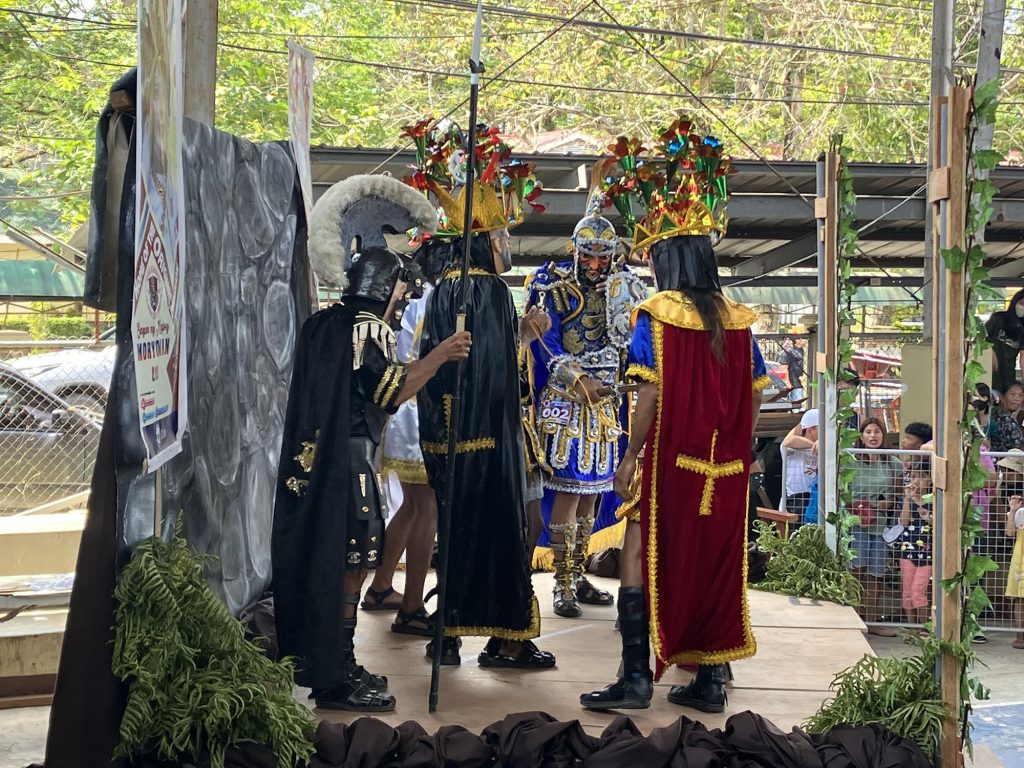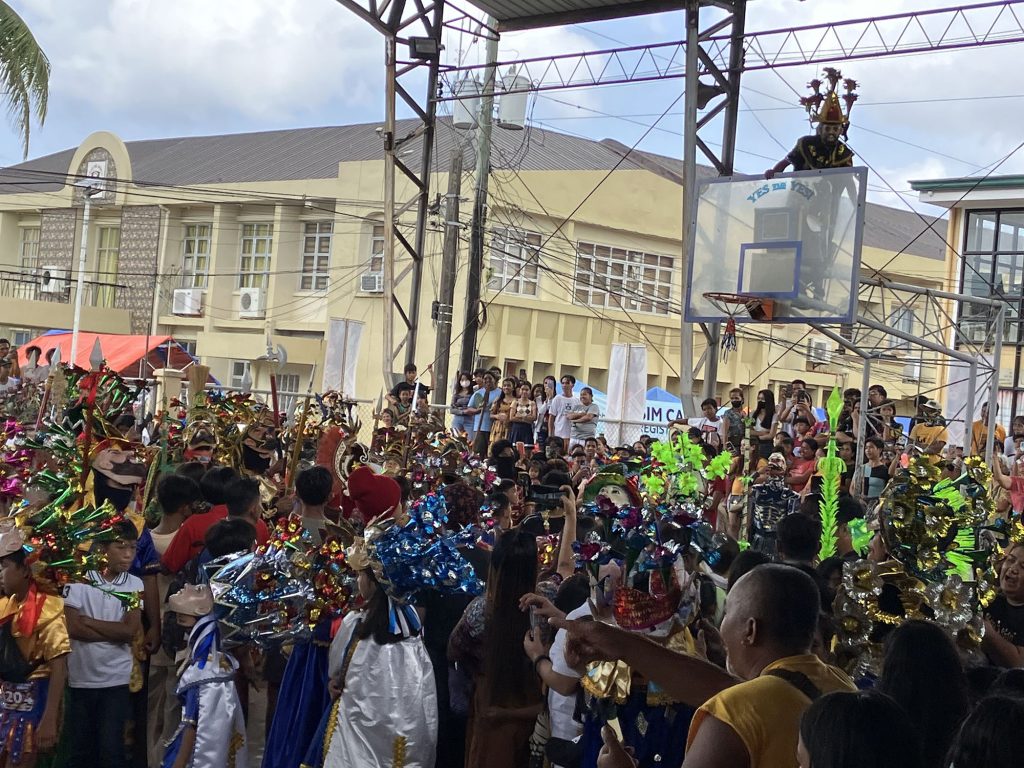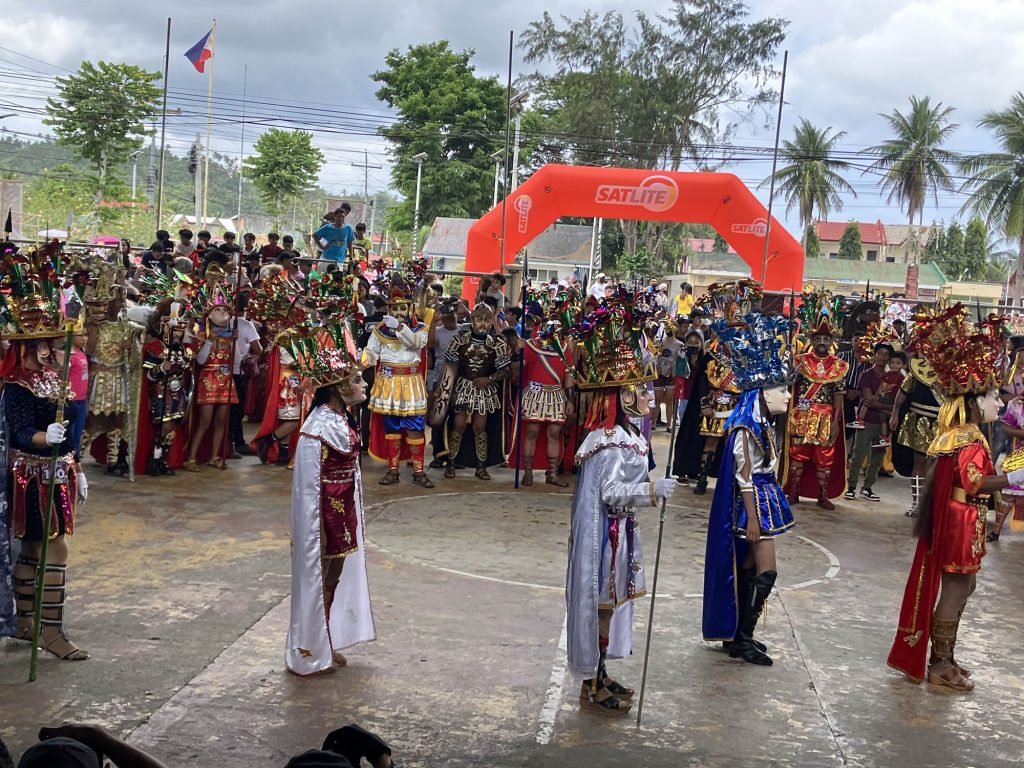Among the Holy Week traditions in Marinduque, the most visible, picaresque and visual is the Moryonan. The province’s gateway and the location of the geodetic center, the home of original moryon is Mogpog. There might be recent innovations, creative renditions and probably emphatic deviations to the tradition, to the Spanish helmet there remains three main categorizations: the original Bulaklakan, the roman centurion, and the “Moriong Bastos.” Obscene as it were, culture and traditions have an interesting way of self-referencing and reinventing self to endure changes and threats to its own existence. The Mogpog Local Council for Culture and Arts have organized time and again in respect with the Samahan ng mga Moryon sa Mogpog and the St. Isidore Parish recognitions of those who carry out sacred vows “panata.” Apart from the Romano and Bulaklakan, there is a separate category for Lady Moryons, Kid Moryons, Moryon made of recycled and indigenous materials. On top of this, there is also the most unique and the eldest moryon (not in age) but the length of panata. Despite all of the changes and fanfare, the narrative is constant since the time of Fr. Dionisio Santiago in the between 1807 and 1857, there is the central Roman Captain with one eye blind who experienced a miracle and paid the price with his head for professing his faith to God, Jesus Christ. Pretty much all the cultural heritage Mogpog has originated from the church ever since Mogpog became a separate visita from Moneserrat De Marinduque, the present-day Boac, the capital town of the province.
